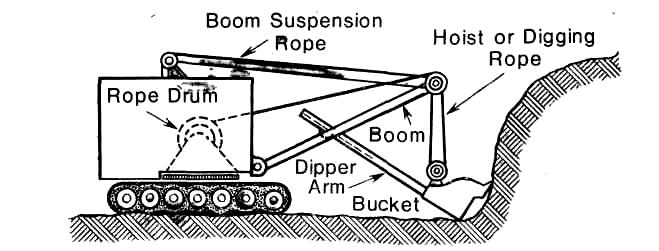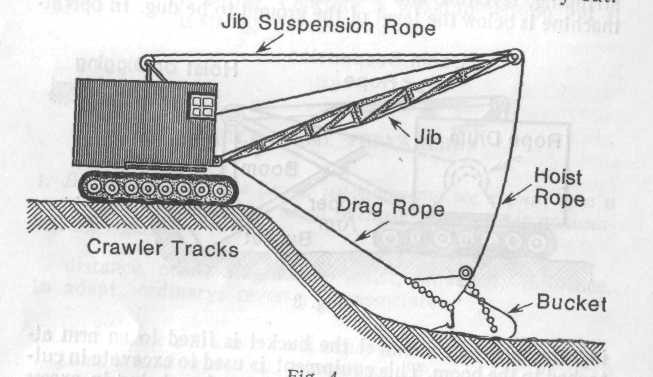
- •Курский государственный технический университет
- •Методические указания по английскому языку для студентов 2 курса специальности «Городское строительство»
- •Town Planning
- •Design of the complete town
- •2. Вспомните значения следующих английских слов и подберите к ним соответствующий перевод из правого столбца.
- •Design of the Complete Town
- •1. Вспомните, какие русские слова имеют те же корни, что и следующие английские слова:
- •Roads. Road Junctions and Intersections
- •Traffic control
- •2. Вспомните значения следующих английских слов и подберите к ним соответствующий перевод из правого столбца.
- •Traffic Control
- •Residential and Industrial Buildings
- •Types of buildings
- •1. Вспомните, какие русские слова имеют те же корни, что и следующие английские слова.
- •2. Вспомните значения следующих английских слов и подберите к ним соответствующий перевод из правого столбца:
- •Types of Buildings
- •Building materials
- •The choice of material
- •1. Вспомните, какие русские слова имеют те же корни, что и следующие английские слова.
- •The Choice of Material
- •Reinforced concrete
- •1. Вспомните, какие русские слова имеют те же корни, что и следующие английские слова.
- •Reinforced-Concrete Elements Production
- •Construction equipment
- •On Mixing, Moulding and Curing Equipment
- •1. Вспомните, какие русские слова имеют те же корни, что и следующие английские слова.
- •Earth-Moving Machinery
- •Excavators
- •Heating
- •Panel Heating
- •Supplementary texts for reading and translation architectural planning
- •Vocabulary
- •Design criteria
- •Vocabulary
- •Vocabulary
- •The millenium dome
- •Vocabulary
- •Floor systems
- •Vocabulary
- •Foundations
- •Vocabulary
- •Leaning tower of pisa begins to be stabilized
- •Vocabulary
- •The foundation of the ostankino tv tower
- •Vocabulary
Excavators
(1) The universal excavator can be equipped with five attachments and conversion from one type to another is comparatively easy. These changeable attachments are known under the following names: 1. shovel; 2. dragline; 3. grab or clamshell; 4. backacter or backhoe; 5. crane.
Shovels
 (2)
The shovel equipment is used in general excavation, stripping,
levelling and clearing jobs where the level of the machine is below
the level of the ground to be dug. In operating the plant as a shovel
the bucket is fixed to an arm attached to the boom. This
equipment is used to excavate in cuttings or banks, the height
of the working face being in excess of 5 feet, the maximum height
depending upon the size of machine used. They are capable of digging
comparatively hard grounds such as chalk, hard gravel, ground
containing loose rock, etc. They are generally used in conjunction
with transporting vehicles to haul away the excavated material.
(2)
The shovel equipment is used in general excavation, stripping,
levelling and clearing jobs where the level of the machine is below
the level of the ground to be dug. In operating the plant as a shovel
the bucket is fixed to an arm attached to the boom. This
equipment is used to excavate in cuttings or banks, the height
of the working face being in excess of 5 feet, the maximum height
depending upon the size of machine used. They are capable of digging
comparatively hard grounds such as chalk, hard gravel, ground
containing loose rock, etc. They are generally used in conjunction
with transporting vehicles to haul away the excavated material.
Draglines
Dragline equipment consists of a bucket suspended by a rope from a long jib of lattice-steel construction. The action of the machine is to throw the bucket away and outwards, it then being drawn back towards the machine by another rope excavating the material as it does so. They are therefore operated where excavation has to be carried out at some distance from the machine, their main application being the clearing of canal or river beds, digging open ditches, etc. They are also associated with excavations of the basement type where large areas and volumes are involved, the material being spread and levelled within the orbit of its jib or loaded to transport for disposal.
Grabs
 (4)
Grabs consist of two half-buckets hinged together at the top. The
grab is suspended from a steel-latticed jib fitted to the machine.
Grabs may or may not befitted with teeth, according to the nature of
the work they have to carry out.
(4)
Grabs consist of two half-buckets hinged together at the top. The
grab is suspended from a steel-latticed jib fitted to the machine.
Grabs may or may not befitted with teeth, according to the nature of
the work they have to carry out.
Their chief application is loading or unloading easily moved materials such as sand, gravel, mud, silt, etc., and excavating materials such as gravel or sand below water level.
(5) The weight of grab used is influenced by the nature of the material. Light grabs are operated in the case of light materials such as loose sand, gravel, etc. Heavier grabs are operated where the excavation of heavy materials is involved.
Cranes
(6) Mechanical excavators may be adapted for use as cranes using a long jib of steel-lattice construction. Their application is that of an ordinary crane in handling, hoisting and lowering materials, the long jib being operated with lesser loads where long reach is involved.
Backacters
(7) Backacter equipment is in effect shovel equipment functioning in reverse, the bucket performing the excavation backwards towards the plant. The bucket, as in the case of shovel equipment, is attached to an arm which pivots on the boom. This equipment is used for the excavation of trenches and is capable of doing so down to a depth of approximately 12 feet. They are suitable for use in excavating all normal grounds, but excessively wet or hard, such as running sand and rock.
УПРАЖНЕНИЯ
3. Сверяясь с текстом, подберите английские эквиваленты из правого столбца к данным русским терминам.
поверхность забоя ковш гравий транспортное средство грейфер русло реки канава траншея ил уровень вылет стрелы обратная лопата плывун вскрышные работы решетчатая конструкция |
1. stripping jobs 2. silt 3. river bed 4. level 5. ditch 6. backacter 7. grab 8. vehicle 9. reach 10. gravel 11. trench 12. running sand 13. working face 14. lattice construction 15. levelling jobs 16. bucket 17. rope |
4. Подберите слова, близкие по значению, из двух данных групп слов:
general ground size to be capable to consist canal large chief nature to function approximate to be suitable |
1. to be made up of 2. to act 3. widespread 4. character 5. big 6. soil 7. almost the same 8. principal 9. to suit 10. channel 11. can 12. dimensions |
5. Соедините попарно данные неполные предложения из групп А и В.
A. 1. The bucket, as in the case of shovel equipment,... 2. Heavier grabs are operated... 3. The grab is suspended from ... 4. Dragline equipment consists of a bucket... 5. Mechanical excavators may be adapted...
B. 1. ...suspended by a rope from a long jib of lattice construction. 2. ...a steel-latticed jib fitted to the machine. 3. ...where the excavation of heavy materials is involved. 4. ...for employment as cranes using a long jib of steel-lattice construction. 5. ...is attached to an arm which pivots on the boom.
Переведите письменно текст за 25 минут.
The change-over from one equipment to another can be carried out by the operator assisted by unskilled labour in about four to six hours, depending upon the size of plant operated.
The modern shovel is a highly efficient machine which is built to give years of service if properly used and taken care of. These machines are ruggedly built for rough work and hard going but they are not indestructible as some operators seem to think. It is always better to use a larger machine and not overload it than to use a small machine and to try to do work which should be handled only by a larger machine.
Many operators who have learned to operate machines but who lack experience are inclined to work the machine beyond its capacity due to which the maintenance cost tends to be very high. The good operator is always vigilant and uses common sense in the operation of his machine. Excavators are built to dig, and they will dig and give good service if properly handled and maintained.
7. Переведите текст устно со словарем.
Cranes
The function of a crane is to hoist or lower a load suspended from its jib. Various types of cranes are available, the type and size best suited for a specific operation being influenced by the following factors: 1. The nature of the work on which it is to operate. 2. The weight of load it has to handle.
Mobile Cranes. Mobile cranes have a wide range of uses on building and civil engineering works of construction. Cranes of this type usually take the form of a frame carrying a jib, a winch, and other necessary hoisting and controlling equipment, the whole being mounted on a cast-iron bed plate fitted with road wheels of the pneumatic type. One may also have them mounted on caterpillar tracks or on a lorry chassis if desired.
Tower Cranes. Tower cranes are of predominant use in construction practice. They are employed for lifting materials, parts and whole structures onto the buildings being erected, for the installation of separate elements and for loading and unloading operations.
A tower crane consists essentially of a support, a tower, a revolving structure, a boom, a counterweight, and controls.
The operating members consist of the boom, a hoisting pulley and a load handling attachment, usually a hook. The counterweight compensates for the weight of the boom and part of the weight of the load being lifted by the crane.
As to the design, the tower cranes are subdivided into two main groups. The first group includes cranes with the turntable and the counterweight mounted at the top of the stationary tower. Some cranes of this type have a trolley travelling along the boom which makes it much easier to set structural elements precisely in the required place.
The Climbing Crane. The climbing crane has been developed to meet the demands for a crane capable of working on buildings taller than can be accommodated by rail-mounted tower cranes. It is also intended for use where restricted site conditions make track laying and consequently the use of a rail-mounted tower crane impracticable. Principal advantages of this crane are:
1) Lightness and ease of operation. 2) No real limitation to the height of the building upon which it can work. It can be used on buildings up to approximately 420 ft. high. 3) The crane climbs as the construction work progresses. 4) It can be employed on the site from the beginning of the construction, since with a suitable foundation block it will stand and work until the building progresses far enough for the crane to stand on the first floor. All the operations including the erection and climbing and dismantling are power-driven.
